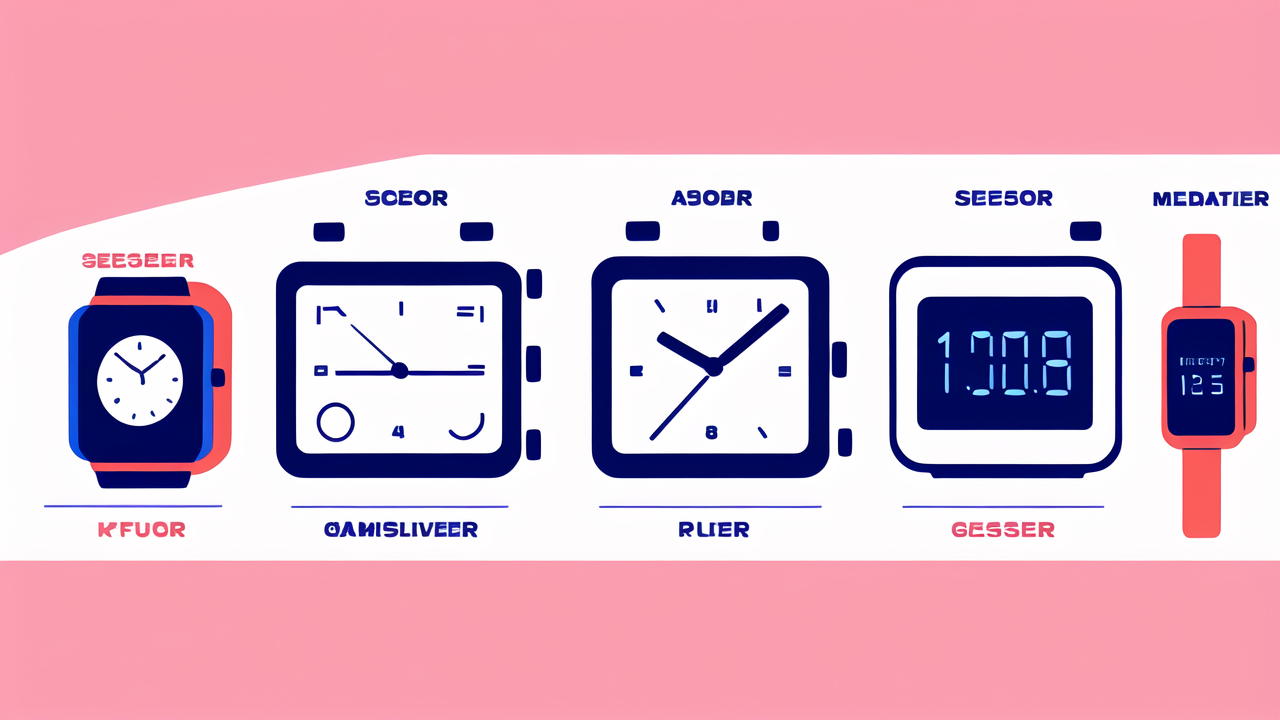Understanding the Evolution of Digital Watches in the United States
The Origins of Digital Watches: A Brief History
Digital watches have come a long way since their inception. The first digital watch appeared in the US in the 1970s. Hamilton Watch Company introduced the Pulsar in 1972. It was a revolutionary timepiece that displayed time using LED technology.

The Pulsar was expensive and had limited features. But it paved the way for future innovations. Soon, other companies joined the race. Casio, Timex, and Seiko became major players in the digital watch market.
These early digital watches were simple. They showed time and date. Some had basic stopwatch functions. But they were a big leap from traditional analog watches. They offered precision and ease of reading time at a glance.
Technological Innovations That Defined Digital Watches
As technology advanced, so did digital watches. The 1980s saw the rise of LCD displays. These were more energy-efficient than LED screens. They allowed for longer battery life and always-on displays.
Manufacturers added more features. Calculators, alarms, and multiple time zones became common. Some watches even included tiny games. The 1990s brought new materials and designs. Plastic cases gave way to metal and composite materials.
Water resistance improved. Digital watches became more durable. They could withstand shocks and extreme temperatures. These innovations made digital watches popular for sports and outdoor activities.
The Role of Consumer Demand in Shaping Digital Watches
Consumer preferences played a big role in shaping digital watches. People wanted more than just time-telling devices. They sought watches that fit their lifestyles and needs.
Fitness enthusiasts demanded features like heart rate monitors and step counters. Travelers wanted world time and currency converters. Business people needed organizers and reminders.
Watch makers responded to these demands. They created specialized watches for different user groups. Sport watches, dress watches, and multi-function watches emerged. This diversification helped the digital watch market grow and evolve.
Key Features That Set Today's Digital Watches Apart
Precision and Accuracy: The Heart of Modern Digital Watches
Modern digital watches are marvels of precision. They use quartz crystals for timekeeping. These crystals vibrate at exact frequencies. This allows for extremely accurate time measurement.

Many digital watches now sync with atomic clocks. This ensures they stay accurate to within seconds per year. Some models use GPS signals to adjust time automatically across time zones.
Advanced models offer features like chronographs and split-second timing. These are useful for sports and scientific applications. The accuracy of today's digital watches far surpasses that of their predecessors.
Design and Aesthetics: The Intersection of Functionality and Style
Today's digital watches are not just functional. They're also fashionable. Designers have worked hard to make them attractive and wearable.
- Sleek and slim profiles
- High-resolution displays
- Customizable watch faces
- Interchangeable straps
These features allow users to personalize their watches. Many models come in different colors and materials. From sporty silicone to elegant metal, there's a style for everyone.
Some watches now use e-ink displays. These mimic the look of traditional watch faces. Others have full-color touchscreens. The variety in design makes digital watches suitable for all occasions.
Integration of Smart Technology in Digital Watches
Smart technology has revolutionized digital watches. Many now function as mini-computers on your wrist. They offer features like:
- Bluetooth connectivity
- Smartphone notifications
- Voice commands
- Contactless payments
- Health and fitness tracking
These smart features blur the line between watches and wearable computers. Users can check emails, make calls, and track their health. All from a device on their wrist.
Some watches even have built-in GPS and music storage. This makes them ideal for runners and outdoor enthusiasts. The integration of smart tech has greatly expanded the capabilities of digital watches.
The Future of Digital Watches in the Market
Anticipating New Technologies in Digital Watchmaking
The future of digital watches looks exciting. New technologies are on the horizon. We can expect to see advancements in several areas:

- Longer battery life through improved power management
- More accurate health sensors for medical-grade monitoring
- Flexible and even rollable displays
- Enhanced AI assistants for personalized services
- Improved durability with new materials like graphene
These technologies will make digital watches even more useful and versatile. They may become essential health monitoring devices. Or serve as personal assistants that learn and adapt to our needs.
The Impact of Wearables and IoT on Traditional Digital Watches
The rise of wearables and the Internet of Things (IoT) is changing the digital watch landscape. Smartwatches are becoming more popular. They offer features that traditional digital watches can't match.
But this doesn't mean the end for traditional digital watches. Many consumers still prefer simpler, focused devices. They value long battery life and ease of use over complex features.
Digital watch makers are adapting. They're incorporating some smart features while keeping their core strengths. This hybrid approach may be the key to staying relevant in the IoT era.
Assessing the Growth Prospects of Digital Watches Industry
Despite competition from smartwatches, the digital watch industry is still growing. There's a market for reliable, purpose-built timepieces. Especially in areas like sports, outdoor activities, and professional use.
The industry is diversifying. Some brands focus on high-end, feature-rich models. Others target budget-conscious consumers with affordable, quality watches. There's also a growing vintage market for classic digital watch models.
As technology advances, we can expect new niches to emerge. Solar-powered watches and eco-friendly models are gaining popularity. The digital watch industry will likely continue to evolve and find new ways to stay relevant.




Leave a comment
This site is protected by hCaptcha and the hCaptcha Privacy Policy and Terms of Service apply.